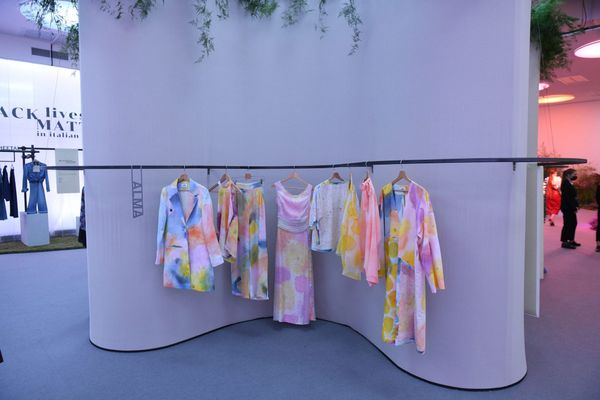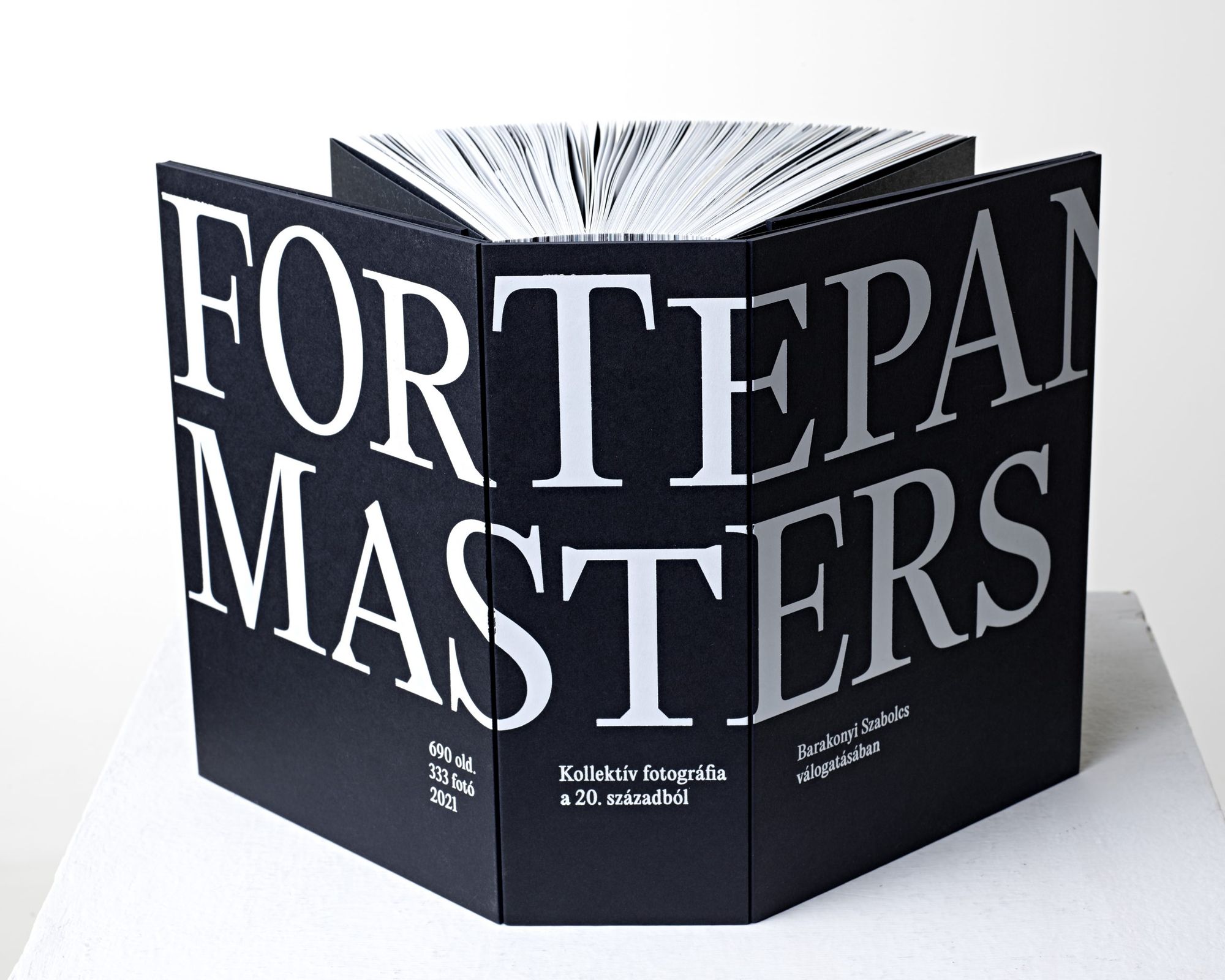The nearly seven hundred-page photo book Fortepan Masters—Collected Photography in the 20th Century—Selected by Szabolcs Barakonyi, inspired by the archives of Fortepan, has been published. It is much more than a simple photo collection—it is a particularly exciting publication in terms of its material quality and graphic solutions.
Fortepan is an online archive that began with the digitization and online uploading of photos collected and found by the founders over the years, and the number of images has been growing ever since. Although the free-to-use community archive collects images from the twentieth century, its practice is very contemporary, and its operating model is unique worldwide. A privately published photo book entitled Fortepan Masters—Collected Photography in the 20th Century—Selected by Szabolcs Barakonyi has now been made from selected pictures of Fortepan.
The 690-page publication contains 333 Fortepan images. Its mastermind and art director is Szabolcs Barakonyi, who has been working actively for more than twenty years, with pictures on a daily basis. Of this, he spent twenty-two years in the press—where photography always gets an important and definite meaning.
“I decided I was going to work for Fortepan like no one has done so far—I’m alone with the pictures and looking through them from the beginning. Fortepan is a huge archive on the internet, with the number of images slowly rising to over 130,000; however, this amount is almost unmanageable, it is no longer possible to navigate in them,” says Szabolcs and adds that he thinks Fortepan is an imprint of the collective memory of the 20th century. “For the sake of the experiment, we treat it as if it belonged to a single man who was Hungarian and lived through the entire twentieth century.”
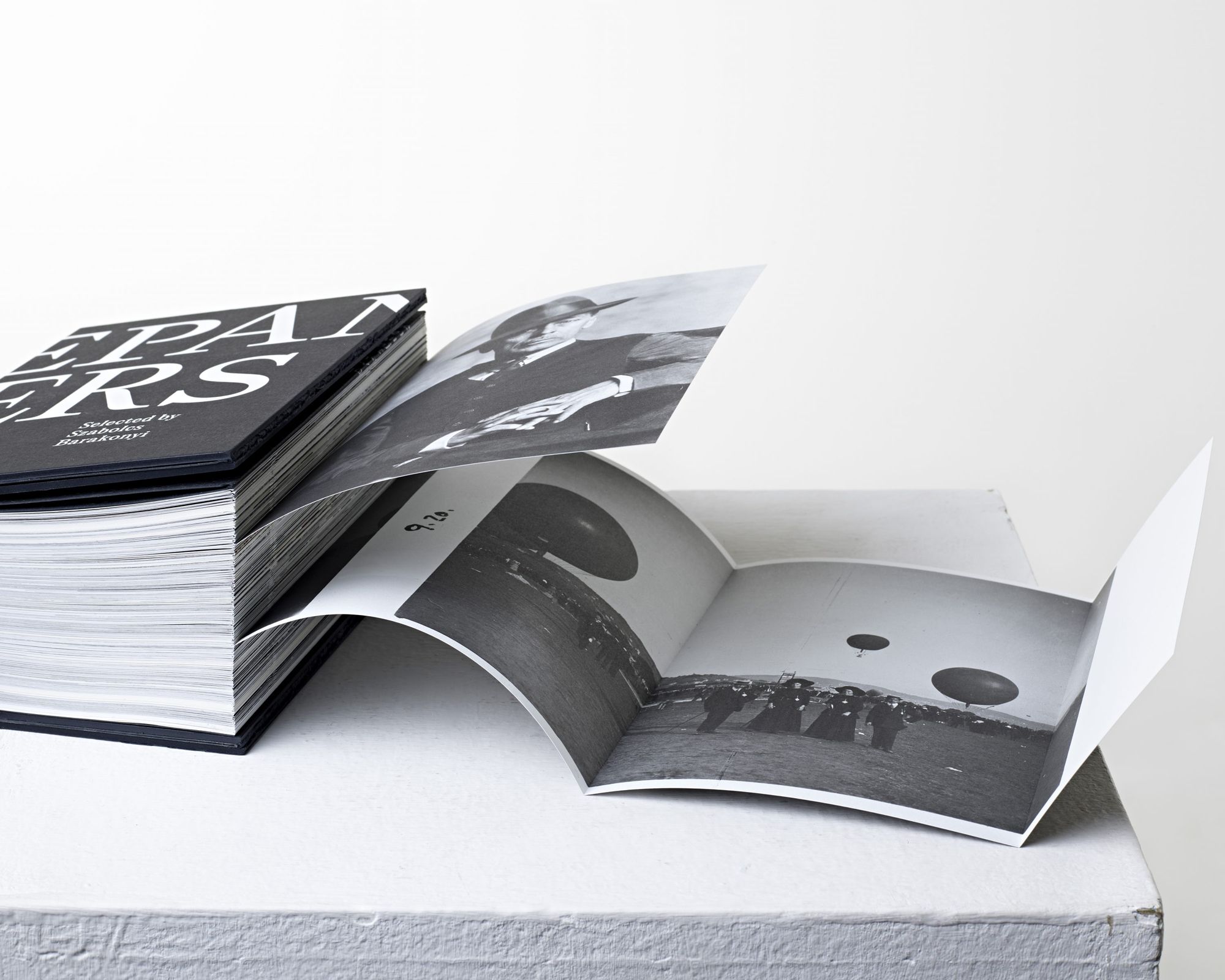
The images in this publication are not based on narratives and do not follow a thematic or chronological system, but rather the fine art and visual aspects dominated the selection and arrangement. The image stream is not broken by captions, we find relatively little text in the thick book. The responsible publisher of the volume is György Simó, the editor was Róza Tekla Szilágyi, and the introduction was written by Ildikó Enyedi. The book also includes an editorial introduction by Szabolcs Barakonyi and an in-depth interview by György Simó with Miklós Tamási, the founder of Fortepan. It also examines fragments of the text that appeared in the image section of the old Index Fortepan.
The book combines exceptional solutions both in terms of material quality and graphic design. In contrast to the usual books, this publication has a double-spine book body, the book consists of triple page units, “triptychs” instead of page pairs. With the resulting surfaces, the possibility of image placement is multiplied, and images of different formats can be placed more democratically. According to Zalán Péter Salát, the person in charge of the creative concept, the structure of the book invites readers to take an active part, who can also create their own photo-combinations in keeping with the way they turn the pages.
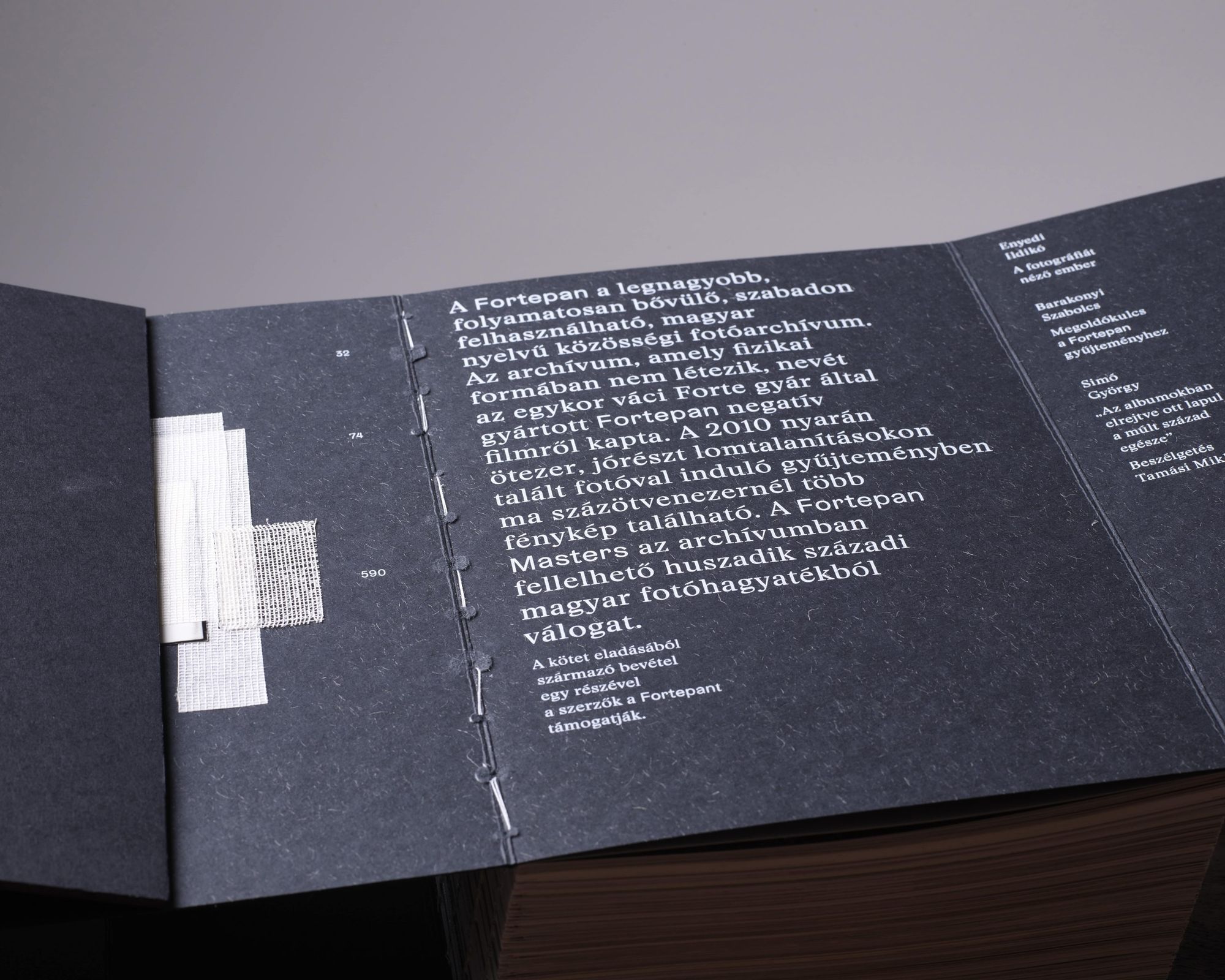
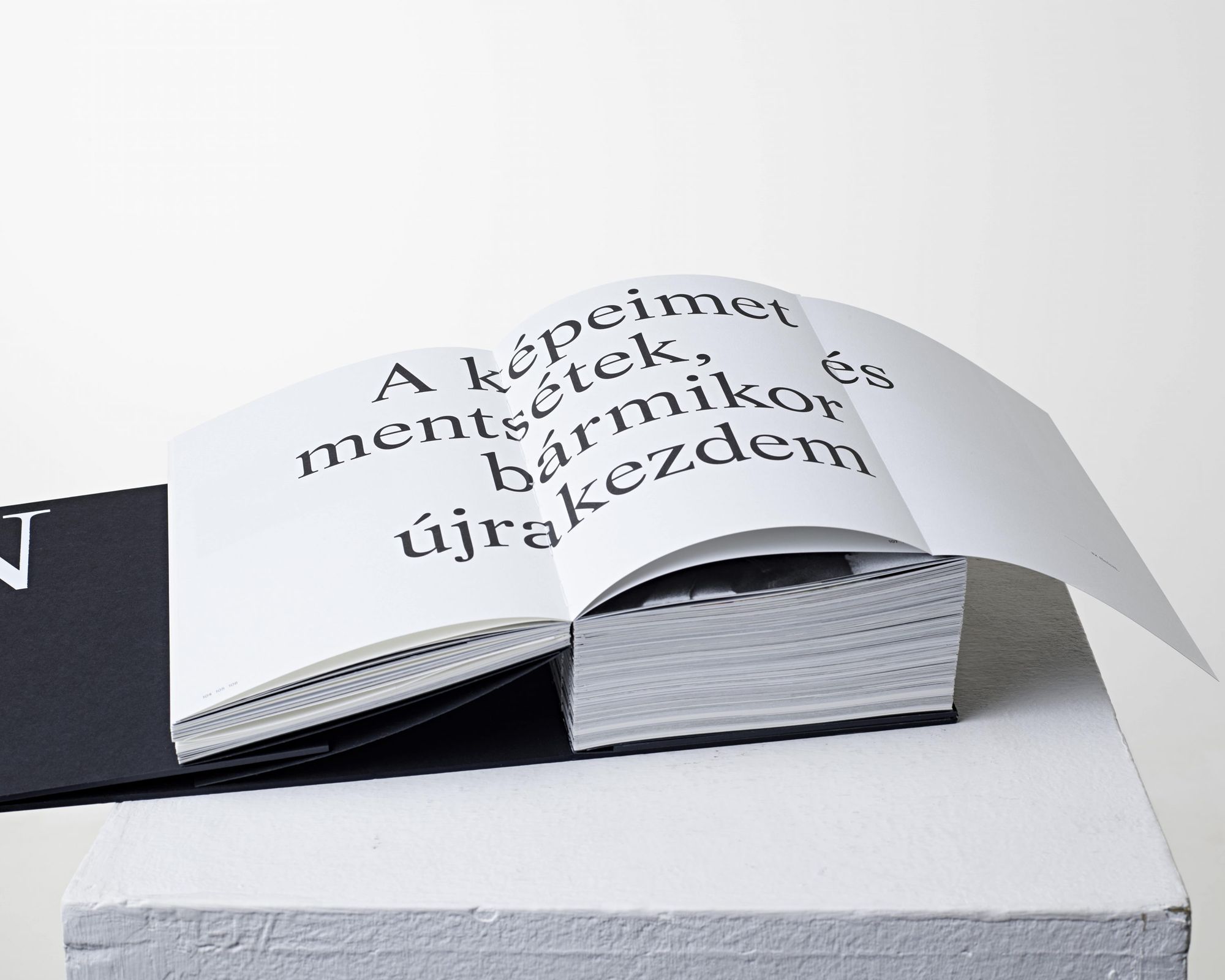
The volume was printed on four different shades of the Swedish Arctic Paper mill’s Munken paper family—shades of different whiteness were randomly picked by the press, so no two book bodies are alike. Although it is a photo book, the cover is not dominated by a photo, but by an exciting setting of the title. According to the creators, Fortepan could not be well characterized with a single photo, which is why they eventually decided on the title-emphasized cover. The book uses rampant letter blending, mixing contemporary versions of the Times inspired by the Times New Roman font, which is as old as the images.
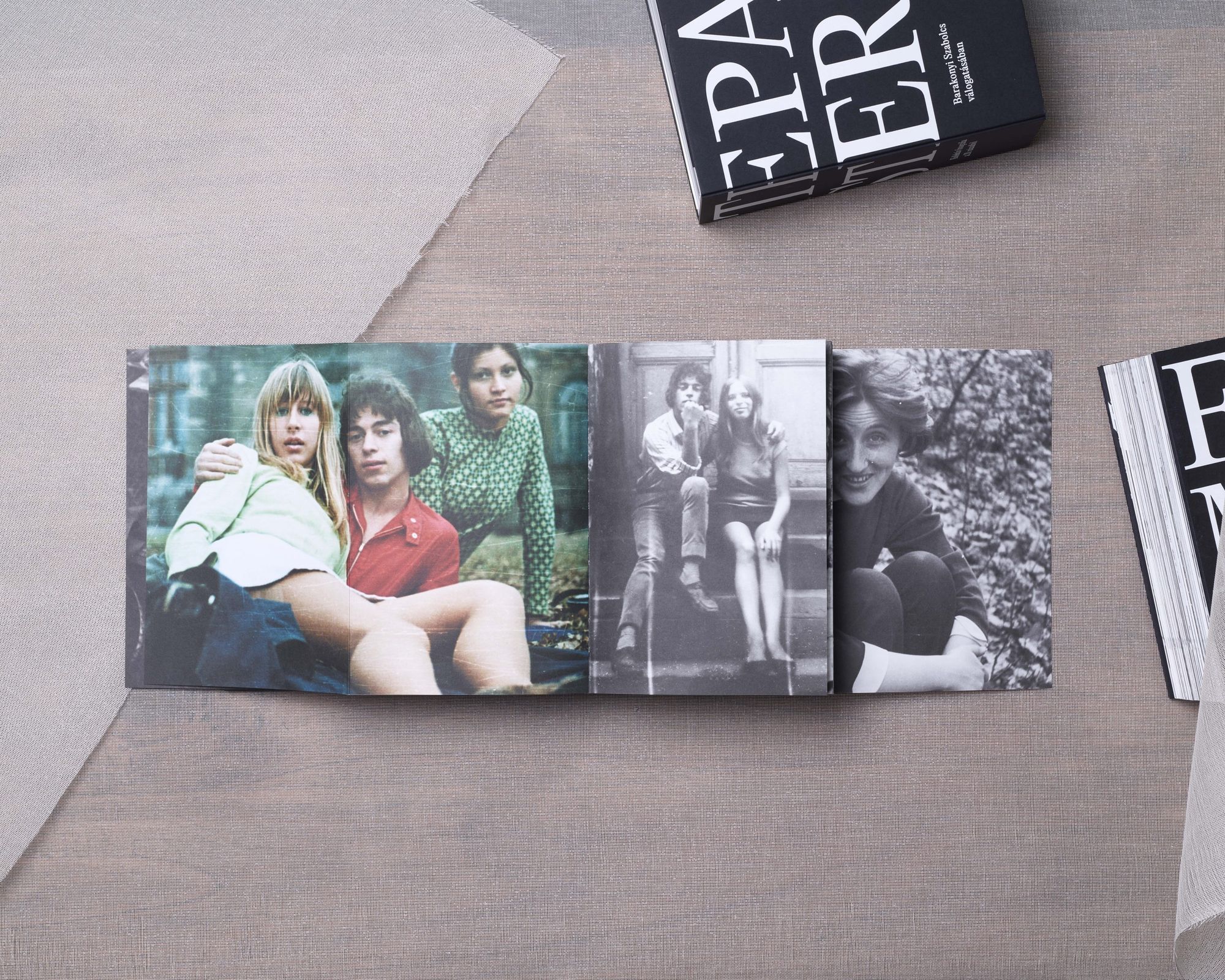
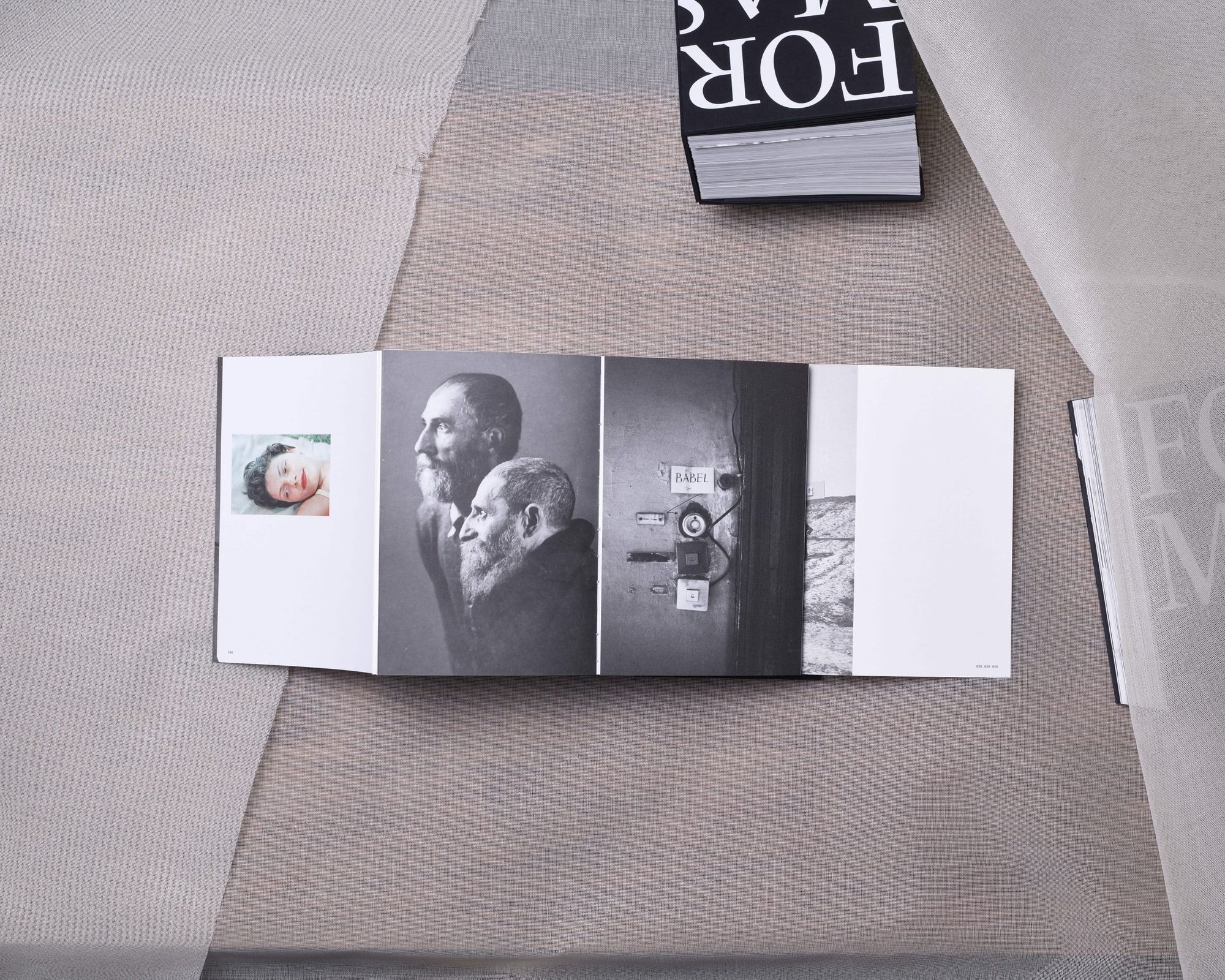
The Fortepan Masters book is available in Hungarian and English, as well as collector’s copies that have hidden twentieth-century family photographs unpublished on Fortepan. The volume can be purchased for the first time between September 27 and October 10, within the framework of the Autumn Festival in the Írók Boltja (The Writer’s Bookshop), the introductory price is HUF 34,990, around EUR 100.
During the Autumn Festival, the shop window of the Írók Boltja will also feature an installation designed by the AU workshop, which aims to allow street passers-by to view the photo material of the publication available in the bookstore in intimate conditions compared to public window shopping.
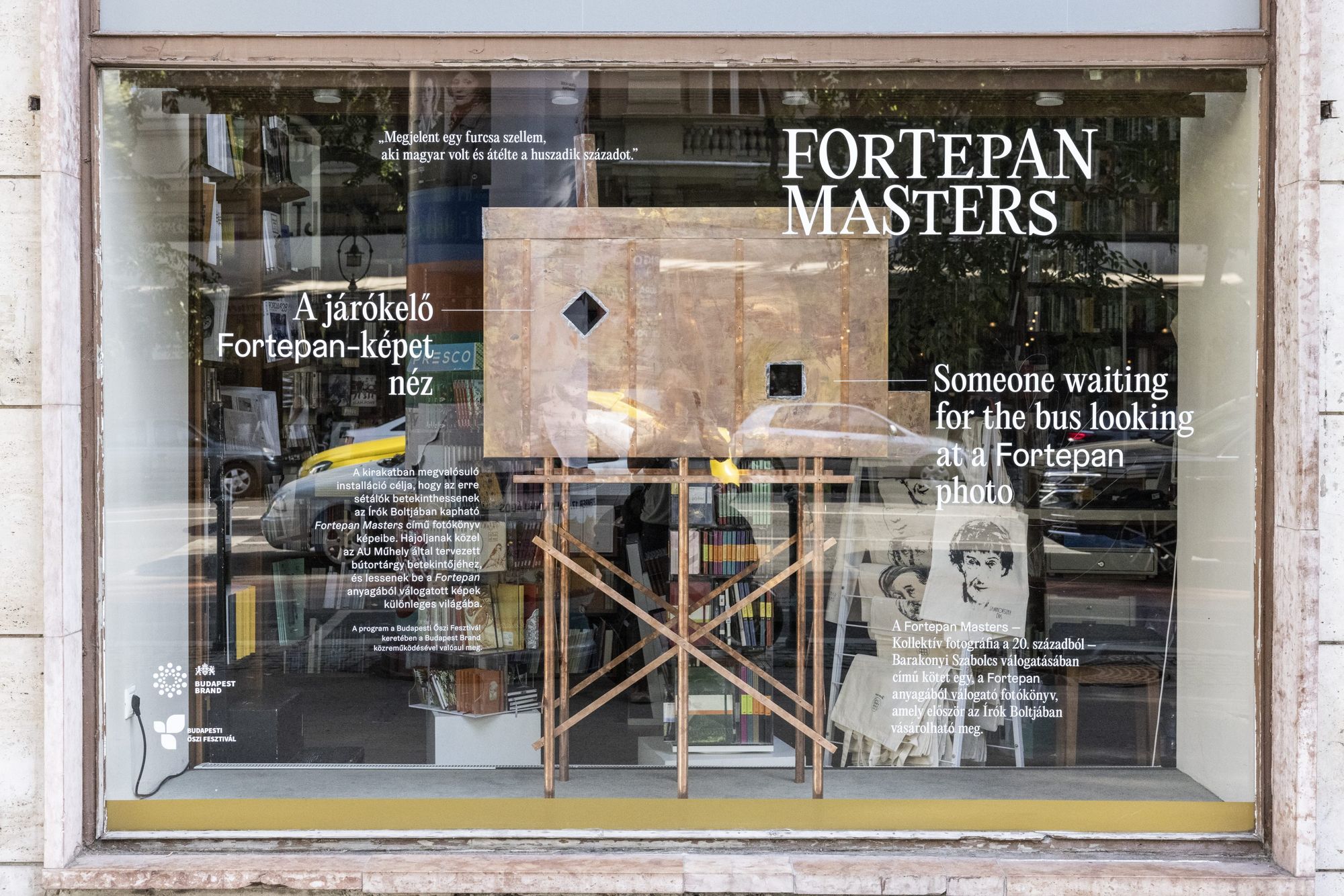
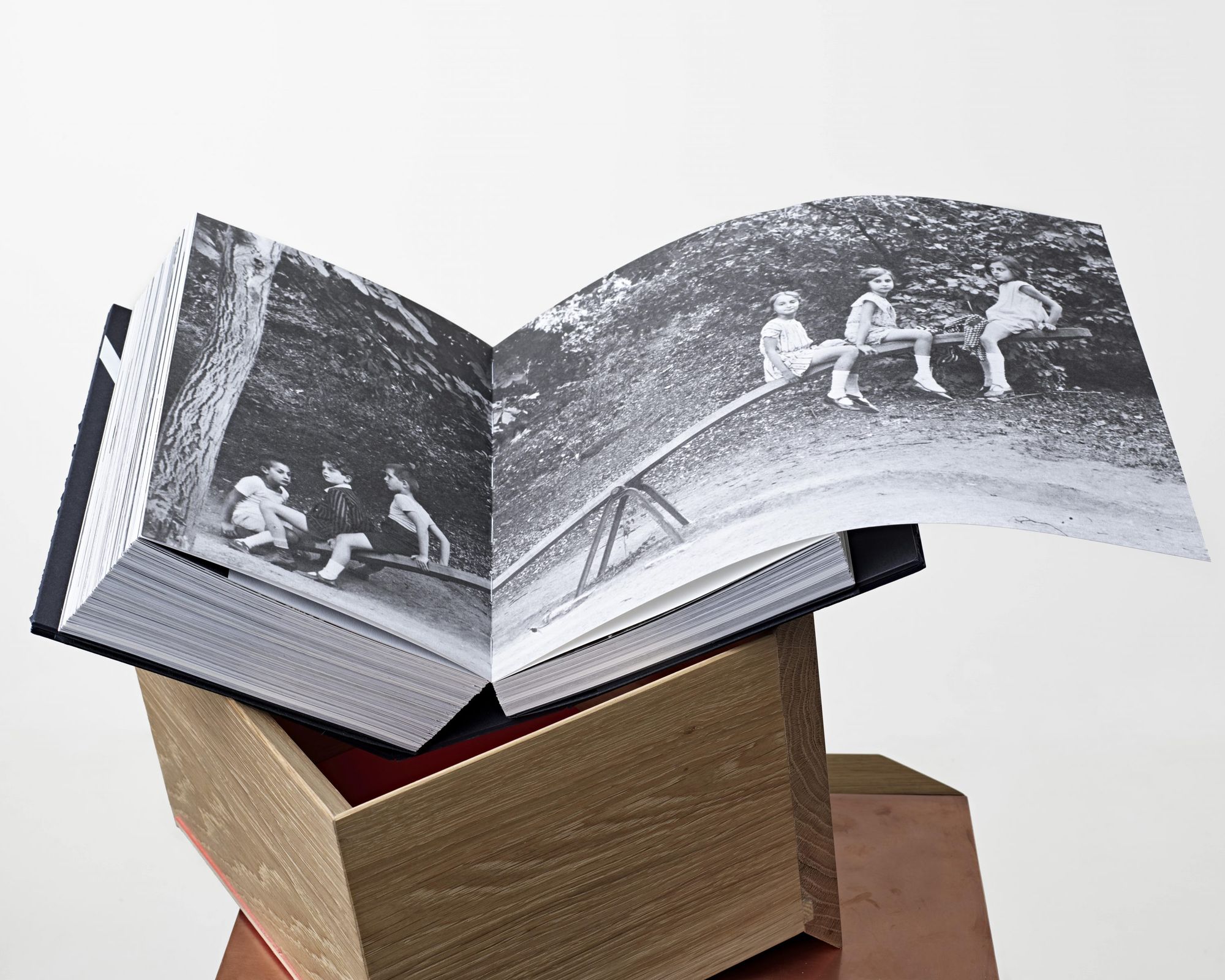
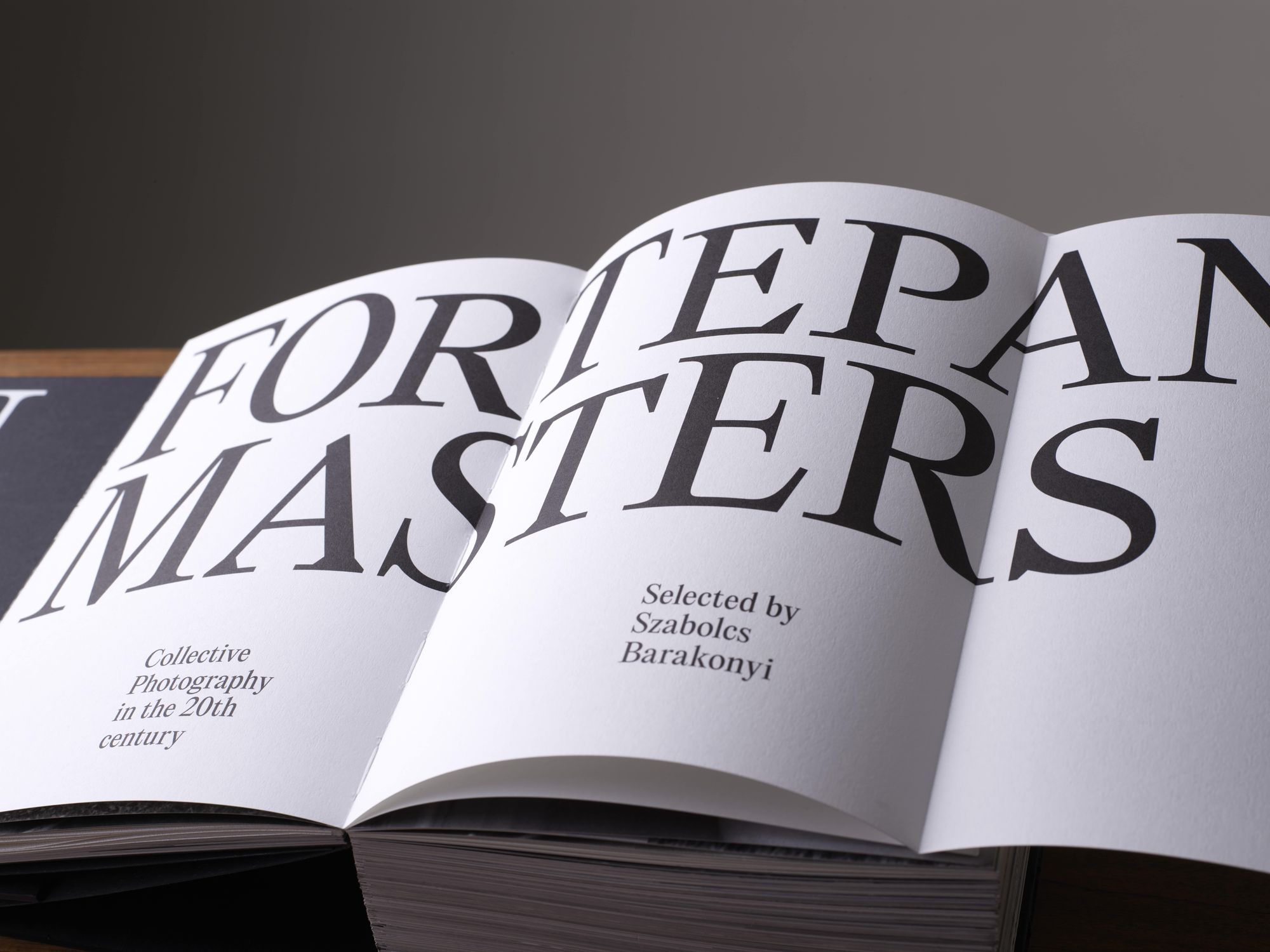
Photos: Csaba Villányi
Fortepan Masters | Facebook | Instagram

Favorite interiors of the week_79

Do you know the solution? Help big companies to think circular!
